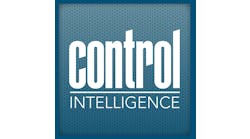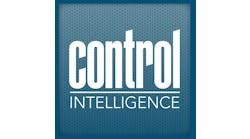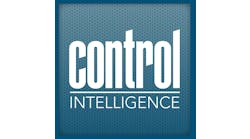In this episode of Control Intelligence, written by contributing editor Joey Stubbs, editor-in-chief Mike Bacidore discusses remote human-machine interface technology.
Transcript
Some human-machine interfaces are appropriate for hazardous or explosive environments. These explosive areas are defined as ATEX Zone 1 or National Electrical Code Class I, Div. 1 or Div 2. HMIs pose a unique challenge to the hazardous area of the automation industry because of the very nature of an HMI display and their associated processors.
Because of the relatively high current that the HMI screen and processor require, current limited intrinsically safe HMI products are not a readily available option, as they are for sensors and I/O devices. The other frequently seen alternative to IS is the explosion-proof approach, which allows explosive gas or dust inside the device or enclosure, but any resultant fire or explosion is contained inside. This is not a user-friendly option, since access to the touchscreen is usually sacrificed, and the touch interface is replaced by a set of buttons for navigation and selecting items on the screen.
Therefore, the most common hazardous-area HMIs involve purging the enclosure with clean air or pressurized inert gas to prevent explosive gases or particulates from entering the housing or enclosure in the first place. Unfortunately, both the upfront and recurring costs of this are very high. The enclosure must be purchased or designed specifically for this setup, complete with gas flow controllers, startup purge behavior and fault behavior if purge pressure is lost. Additionally, the infrastructure and running costs of supplying the purge gas itself can be quite high.
However, for the past 15 years or so, cell-phone and tablet manufacturers have been at the forefront of innovating very high-performance, low-power devices with long battery life and exceptional touchscreen displays. Without the need for wired external power and having no moving parts such as cooling fans or hard drives, these devices seem to be a great evolutionary step for a hazardous-area HMI system.
Indeed, numerous device manufacturers have answered the call with Class I, Div. 1 or Zone 1 tablets for the purpose of industrial control and as HMI replacements. Charge them in a non-hazardous environment, bring them into the hazardous manufacturing area, and launch the appropriate HMI app or client, and you are in business.
As far as the actual HMI application, there are a variety of HMI suites and applications that act as HMI thin clients, needing only a few bits and bytes of data to populate the screens and to launch animations. Of course, with a higher bandwidth wireless connection, the thin client can be replaced with an auto-scaling cloud-based application that streams the interface to the mobile device and scales the graphics automatically to suit the specific device screen size.
To complement mobile devices in the factory, a strong high-speed wireless network is a necessity. Secure broadband Wi-Fi networks are the standard for factory-floor wireless communication for instrumentation and control. However, private LTE or 5G modems are becoming more popular in the automation world as a means to securely network standard cellular devices, including tablet HMIs.
There are some specific requirements that must be addressed with a mobile device being used as an operator interface to a piece of equipment, a robotic cell or a manufacturing line, whether in a hazardous area or not.
First is the subject of emergency-stop buttons. Specifically, NFPA 79, Electrical Standard for Industry and Design states: "Stop or Emergency Stop pushbuttons shall be located at each operator control station. Emergency Stop pushbuttons shall also be located at other locations where Emergency Stop is required."
Most safety departments interpret this as requiring a physical e-stop button anywhere the manufacturing line or cell can be started, including mobile devices. Again, suppliers have answered with handheld tablets that include a wireless physical e-stop button which can run on a dedicated wireless safety network or one of the standard “black channel” safety protocols that can piggyback on the cellular or Wi-Fi network.
Another mobile device-specific requirement from the NFPA and OSHA is that the HMI must only control devices in the operator’s field of vision. The application or tablet must be able to determine which cell or line it is connected to and only allow operation through the HMI while it is in proximity of that line or some other mechanism to prevent operation when outside the field of view.
Monitoring is fine, but issuing commands is forbidden in this situation. This functionality is built into many mobile HMI applications, as it is pretty logical that you don’t operate the machine from another building, from your desk or while on a bathroom break.
However you plan your next HMI for hazardous areas, keep in mind the new offerings of tablets for Class I, Div. 1 or Div. 2 or Zone 1. Their basic characteristics, as well as the associated advances in factory broadband and HMI developments suites lend themselves well to developing a great, portable HMI that meets the requirements for hazardous environments.




